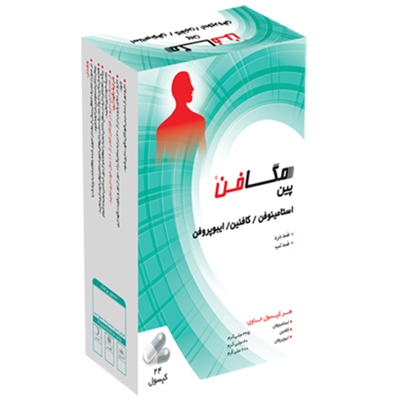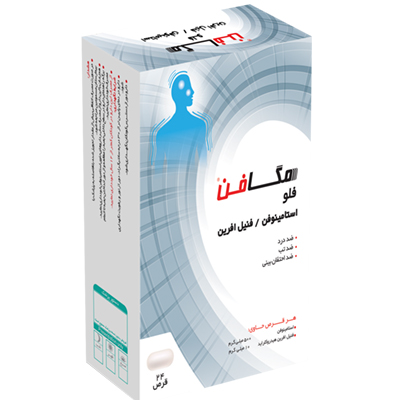Genital psoriasis in women is a chronic, autoimmune skin disorder that, despite its relative prevalence, remains largely unnoticed and under-recognized. This disease, which is associated with an abnormal immune system response to skin cells, can affect the superficial layers of the skin in the genital area and cause inflammation of sensitive tissues. Contrary to popular belief, psoriasis is not limited to the elbows and knees; the female genital area is also susceptible to involvement.
Inverse psoriasis: The most common type in the female genital area.
In women, inverse psoriasis is the most common type of genital psoriasis. This type lacks the usual silvery scales and is characterized by red, smooth, shiny lesions. Skin-to-skin contact and the moist environment of the area exacerbate inflammation. It is also the most common type in Psoriasis of the male genital area It is considered.
Differentiating female genital psoriasis from other skin and infectious diseases
Correct diagnosis of genital psoriasis in women requires sufficient knowledge of its differences from other similar diseases, which should only be done by a specialist. Lesions caused by this disease are often confused with fungal infections, genital herpes, or contact dermatitis.
The differences in appearance and behavior of these lesions, such as clear, shiny borders, lack of purulent discharge, and negative response to antifungal drugs, are considered clinical differentiation tools. Below, we will mention the most common of these:
- One of the most common diagnostic errors is confusing genital psoriasis with genital candidiasis. While the fungal infection is usually accompanied by a white discharge, severe burning, and an unpleasant odor, this condition lacks these symptoms. Also, the response of the disease to antifungal treatment can make a significant difference.
- One of the key points in the clinical examination is to observe a clear and well-defined border of the lesions in female genital psoriasis. Unlike superficial infections or dermatitis, psoriasis lesions are characterized by a smooth, shiny, and non-exudative surface. In the moist environment of the genital area, these features should be examined more carefully by a specialist.
- Purulent discharge is a classic sign of bacterial or fungal infections, while in female genital psoriasis, no discharge is seen, even in the active phase of the disease.
- Genital herpes has a sudden onset, painful blisters, and sometimes fever and body aches. In contrast, psoriasis has a chronic course, without blisters and without systemic symptoms. The shape and distribution of the lesions also play an important role in differentiating the two.
Specific clinical symptoms of genital psoriasis in women
As mentioned, the presence of disturbing symptoms in an extremely sensitive and private area can have significant psychological and social effects. Feelings of shame, decreased sexual desire, and avoidance of marital relations are among the common consequences of this disease in affected women. Correct diagnosis and professional treatment of these issues have a direct therapeutic role. One way to diagnose psoriasis in women is through clinical symptoms, some of which we will discuss below:
- Lesions in female genital psoriasis appear primarily as red, flat, non-scaly plaques with classic, well-defined borders. In the labia minora, vagina, and perianal areas, these lesions may have a shiny, velvety appearance. This misleading appearance can be mistaken for fungal infections or contact dermatitis.
- Symptoms of genital psoriasis in women may also vary depending on the location of the lesion. On the labia majora, the lesions are wider and more palpable, while on more mucosal areas, such as the vaginal opening, the lesions are soft, thin, and without clear borders. Sometimes, parallel red lines without cracks are also seen in the intergluteal area.
- Itching is one of the most prominent and bothersome symptoms of genital psoriasis in women. It is often accompanied by a burning or tingling sensation and may be worse at night. Unlike itching caused by infections, in this type, scratching provides temporary relief but worsens the lesions.
- In female genital psoriasis, the deep red color and smooth surface of the lesions give them a lacquer-like appearance. This appearance not only facilitates clinical diagnosis, but is also an important distinction from diseases such as eczema or candidiasis. These lesions usually feel warm and tender to the touch.
- In some cases, especially in postmenopausal women or those with dry mucous membranes, genital psoriasis lesions may be accompanied by localized pain, a burning sensation during urination or intercourse. This pain is sometimes dull and visceral, and is also accompanied by symptoms such as a feeling of heaviness or tension in the genital area.
9 Areas Involved in Female Genital Psoriasis
Despite its limited appearance, genital psoriasis can involve multiple anatomical regions simultaneously or individually. Careful examination and differentiation of each of these regions is a key step in reaching a correct diagnosis and adopting an effective treatment strategy. Identification of the pattern of lesion distribution also helps in the diagnosis and differentiation from other skin disorders.
- Labia majora: The most common site of plaques. The labia majora, due to their location in a drier area and greater contact with clothing, are one of the most common sites involved in female genital psoriasis. Plaques in this area are usually red, broad, and well-demarcated. Sometimes, their surface is shiny and smooth, and contrary to expectations, they lack the classic scaling.
- Labia minora area: The thin, mucous labia are often affected by soft, almost invisible lesions. In this area, there is severe redness and inflammation without any noticeable thickness. The high sensitivity of this area causes pain and burning during daily activities and intercourse, even if the lesions are small.
- Vaginal opening: The transition zone between the outer skin and the inner tissue is a site with special histological characteristics. In this area, genital psoriasis lesions may have a vague appearance, ill-defined borders, and no crusting. High sensitivity and similarity to fungal infections complicate accurate diagnosis.
- Clitoris and surrounding skin: The clitoris and surrounding skin are among the most sensitive genital areas. Psoriasis in this area is often accompanied by severe pain and irritation. Patients complain of constant burning, stinging itching, and extreme discomfort. Any lesion in this area has a significant impact on quality of life and sexual satisfaction.
- Perineum and perineum: The perineum (the area between the vagina and anus) and perineum are a suitable site for the exacerbation of skin lesions due to constant friction, sweating, and contact with secretions. Genital psoriasis in this area of women is often accompanied by flat, red, and shiny plaques, often with severe itching, and in some cases, with superficial ulcers.
- Intergluteal fold: The intergluteal fold, or the crease between the buttocks, is a less common but less noticeable area of genital psoriasis in women. Lesions in this area are usually linear, red, and non-scaly. Being in a moist, closed area increases the risk of irritation and secondary infection.
- Pubic areas (near the hairline): The area in contact with clothing The upper genital area, where hair begins to grow, may be affected by psoriasis. This area is exposed to direct contact with underwear and pants, and repeated friction can aggravate the lesions. The clinical picture may be confused with folliculitis or eczema.
- Anogenital area: Sometimes psoriasis spreads beyond the classic genital area and involves the anogenital area. This involvement may include the area around the anus, the surrounding skin, and even the folds around the buttocks. Symptoms include burning during defecation, superficial cracks, and localized pain.
- 10. Vaginal mucosal areas: Although psoriasis is very rare in the tissues inside the vagina of women, cases of vaginal mucosal involvement have been reported in clinical studies. This type of involvement is accompanied by symptoms such as non-infectious discharge, deep pain during intercourse, and inflammation of the inner vaginal wall. Its diagnosis is possible only through a specialized examination.
Controlling female genital psoriasis: effective pharmacological, non-pharmacological, and healthcare methods
Management of genital psoriasis in women involves a combination of pharmacological and non-pharmacological approaches, depending on the severity of the disease, the location of the involvement, and the body's response to treatment. Since the skin of the genital area is very sensitive, the choice of Proper treatment for genital psoriasis It must be done with great care and under the supervision of a specialist.
Treatments for female genital psoriasis fall into two general categories: topical treatments, such as ointments and creams, that are applied directly to the skin, including: Mometasone Megacort Ointment and Mometasone Megacort Cream, and systemic or oral treatments that affect the entire body. Creams such as mometasone help control redness, itching, and inflammation of the skin due to their anti-inflammatory properties. For mild to moderate cases, topical treatment is usually sufficient. In severe or resistant cases, oral or injectable medications may be needed.
In addition to drug treatments, maintaining good hygiene and avoiding triggers play an important role in controlling symptoms. The ultimate goal of treatment is to reduce symptoms, improve quality of life, and prevent recurrence. Types of treatment methods for genital psoriasis in women:
- Wearing cotton, loose, and breathable underwear
- Avoiding scented lubricants or hygiene products
- Use hydrocortisone ointment for very mild cases.
- Gently wash with lukewarm water and dry without rubbing.
- Use of biologic drugs for long-term disease control
- Maintaining hygiene in the area with fragrance-free, pH-balanced detergents
- Controlling and reducing daily stress to reduce the frequency of relapses of the disease.
- Use of calcineurin inhibitors such as tacrolimus and pimecrolimus
- Taking oral medications such as methotrexate or cyclosporine in severe cases
- Use of mometasone cream and ointment, a moderate-strength topical corticosteroid
Conclusion | The importance of awareness, timely diagnosis, and targeted control of psoriasis in women
Psoriasis of the female genital area is a chronic inflammatory disease that requires accurate diagnosis and specialized treatment. Inverse psoriasis is the most common type in the genital area, which, unlike other types of psoriasis, does not peel and appears with shiny, red inflammation. It is important to distinguish this disease from fungal infections, genital herpes, and contact dermatitis, because incorrect treatment can aggravate symptoms.
Mometasone cream is one of the most effective topical treatments for controlling inflammation and itching in mild to moderate cases of genital psoriasis in women. Systemic treatments, including methotrexate, biologics, and calcineurin inhibitors, are prescribed in severe cases and should be monitored by a doctor.
Maintaining personal hygiene, avoiding tight and irritating clothing, and managing stress play an effective role in preventing disease recurrence. Educating and informing patients is of great importance to reduce feelings of shame and increase quality of life. A careful examination of the affected areas (labia, perineum, vaginal opening, etc.) helps to select the appropriate treatment and prevent misdiagnosis of psoriasis in the female genital area.
Combination therapy with medication + health care provides the best results in controlling symptoms and preventing disease progression. For a more comprehensive understanding of the causes, symptoms, types, and treatment options, we recommend reading the following article:
What is genital psoriasis? Complete understanding, causes, symptoms and effective solutions




